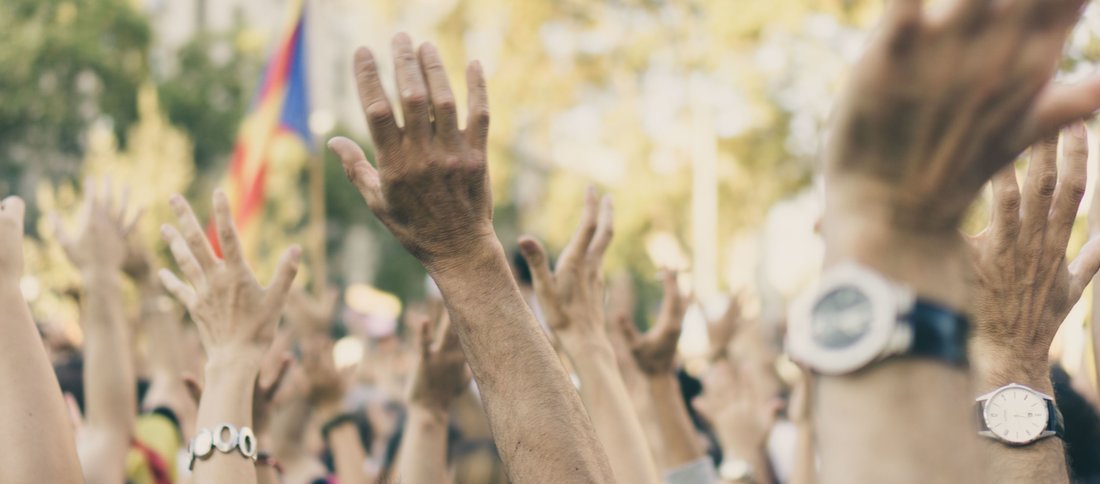
THE AMERICAN RIGHT TO PROTEST
Americans have the right to gather together and protest injustice. These rights were forged in the conflicts that lead to our own revolution, and are written and protected as part of federal and state constitutions. These are some of our most basic rights as citizens. Authorities, those elected and appointed in a democracy, also have both rights and responsibilities to protect the freedom, safety, and livelihoods of Americans. These rights and responsibilities- between citizens and the authorities we’ve appointed to protect us- occasionally clash, and competing interests are decided by the courts.
The law isn’t black and white; it is only black and white at this particular moment in time. It changes and evolves with court decisions. While those fundamental rights to gather and protest are written in our constitutions, the way those rights are interpreted in actions and behaviors change with the court’s interpretations. There have been several times during our country’s history where social protest and authority clashed, from the Revolutionary War to early attempts to bring unions to workers to the first civil rights movements.
For those engaged in public protest and social activism today, conflict with police and other authorities, if it occurs, is most likely to lead to charges of disorderly conduct. The majority of public protests are peaceful and do not threaten safety or property. Leaders and organizers of social protest movements should take steps to protect the participants from behavior that will lead to confrontations with police and possible charges.
WHAT IS DISORDERLY CONDUCT?
Minnesota defines disorderly conduct as behavior that disrupts a lawful gathering, brawling or fighting, using offensive, obscene, or abusive language in a way to alarm or upset others, or offensive, obscene, or boisterous behavior that impacts others. There are also charges that stem from public intoxication, if alcohol or intoxicating substances are involved.
The first important point is the issue of lawful gathering. Others cannot disrupt your lawful gathering, and it will be considered disorderly conduct when there is abusive or offensive language, or fighting, by protesters during someone else’s lawful gathering. This means leadership needs to have the appropriate permissions to hold the gathering, especially if being held on public streets or in city or state parks, or other public spaces.
While speeches are an integral part of protests and social activism, language that suggests or advocates violence, anarchy, or terroristic threats will be seen and interpreted as a threat to public safety. Any behavior that suggests destruction of property, such as tearing down signs or breaking windows, will also be seen as a threat to property. Use of alcohol or intoxicants, or the appearance of same, will engage the police to protect public safety. Hate, in language and through actions, is forbidden by federal law. Language that advocates hate can been seen as inciting violence and making terroristic threats. Our society as a whole rejects hate and supports and protects those who are victimized.
INTERACTIONS WITH POLICE
Even during a lawful gathering, a person much obey a police officer, and should give the police their identity if asked. Minnesota law forbids the wearing of a mask during protest to hide identity. Members of a protest cannot block public access–building entrances or sidewalks–or harass individuals. Trespassing on private property is generally forbidden, and members of a protest must move if told to do so by the police.
If detained by the police during a protest, several rules of behavior are suggested to prevent escalation. Stay calm and don’t use abusive language. Don’t argue with a police officer, or threaten legal or civil action. Keep your hands where they can be seen, and don’t reach for or touch a police officer. Ask if you are under arrest or free to leave, and if under arrest, ask to contact an attorney. If using a phone at a police station, the police have the right to record the call, so do not discuss the specifics of the case over the phone in a police station. Do not physically resist if law enforcement insists on frisking or patting down your outer clothing, but do not consent to further searches until you speak to an attorney.
CONFLICTS WITH POLICE OVER PHOTOGRAPHY OR FILMING
There are specific guidelines for both the public and the police regarding filming, photography, and recording. If on public property, and filming things in the clear view of the public, such as a protest, people have the right to film or take images. A photographer does not have the right to interfere with a police action, however. If police ask a person to stop filming or taking pictures because it is interfering with their work, the filming must stop. Some photographers back off until they are not in the range to interfere, at which point they can continue. Police do not at any time have the right to confiscate cameras, film, or demand to see film or images.
WEAPONS AT A PROTEST
Even if members of a protest are expecting violent retaliation from a competing group, leaders should be clear that no weapons should be brought to the protest, and alcohol and intoxicating substances are forbidden. While organizing, make sure participants know rules of engagement with police, and how to contact help if detained or arrested.
CIVIL DISOBEDIENCE
Civil disobedience is social protest or activism that does not follow the law or published rules. It has been determined by the courts to not be protected speech under the first amendment. If social activism will take the form of civil disobedience, or if the anticipation is conflict with authorities or others, consult with an attorney before the action to plan remediation and to have a contact plan for members of the protest who are arrested.
Can we discuss your questions and concerns? Please get in contact for more information or an appointment.